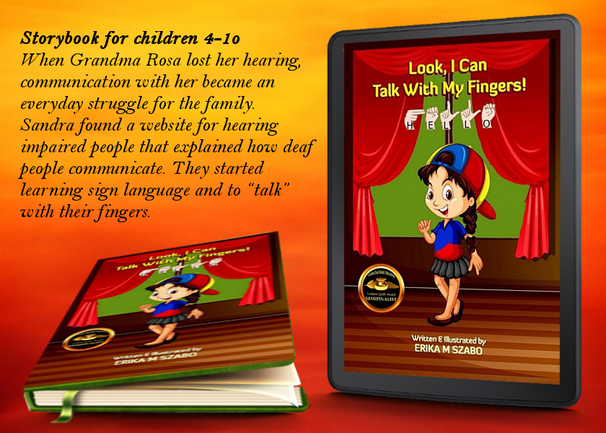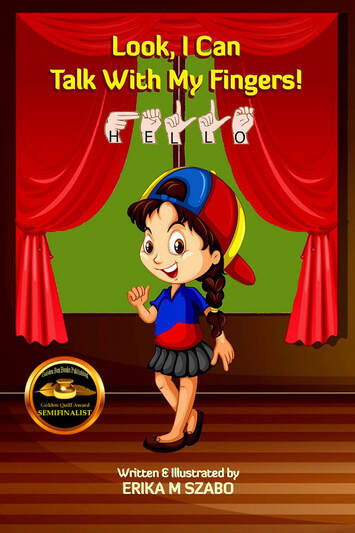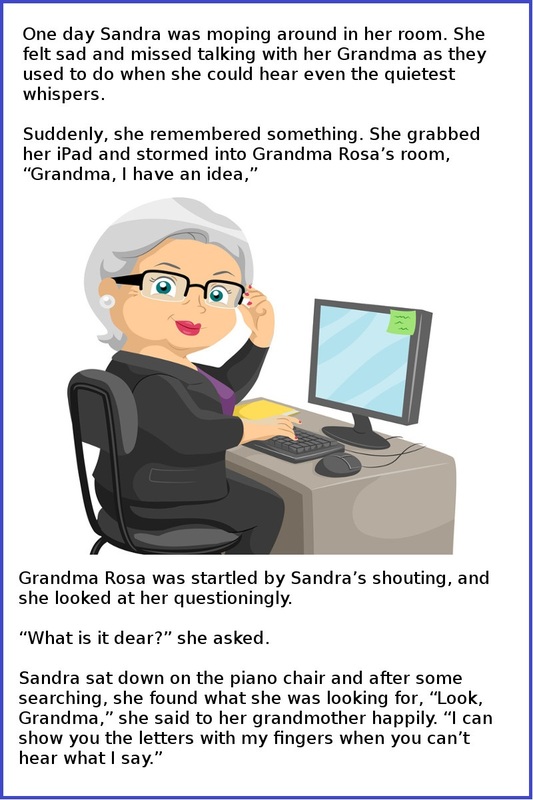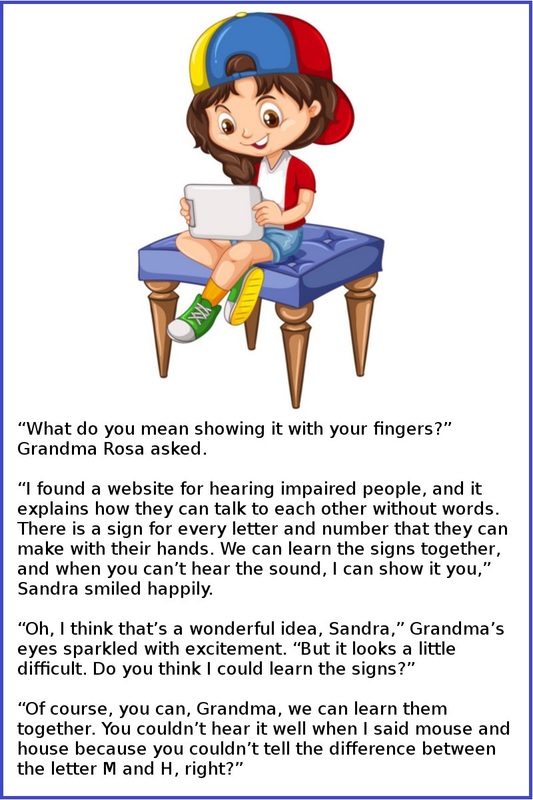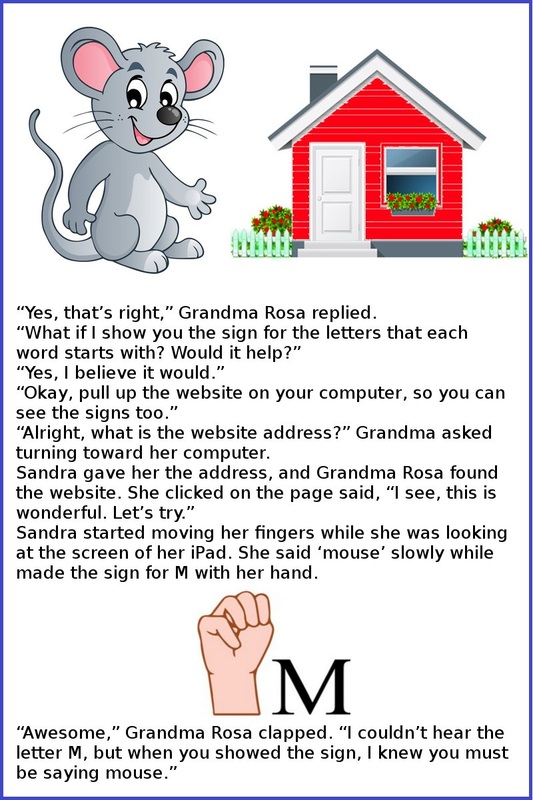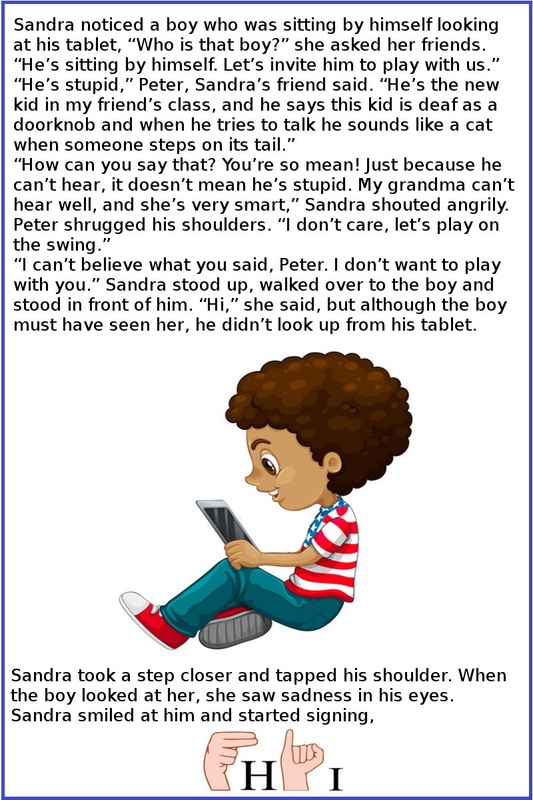Look, I Can Talk With My Fingers:
Storybook for children 4-12 about the difficulties of being deaf, learning sign language, acceptance, friendship, and compassion.
I meet a lot of wonderful people with some form of disability in my line of work as a nurse. It always saddens me when I see the difficulties their illness or condition cause and the ridicule and isolation they have to endure. I write fantasy novels, but I decided to publish this book for children about the hardship of hearing loss that is a vital part of good communication .
I hid an important message to children in this fun picture book, how to learn not to judge or make fun of anyone just because they’re different. The life of any disabled person is no fun and living with a disability has many challenges, but we can learn help to make their life easier and not harder.
I hid an important message to children in this fun picture book, how to learn not to judge or make fun of anyone just because they’re different. The life of any disabled person is no fun and living with a disability has many challenges, but we can learn help to make their life easier and not harder.
A little girl teaches her family and her friends how to relate to someone who is hearing impaired. This fun picture book carries an important message to children, how to learn not to judge or make fun of anyone just because they’re different. The life of any disabled person is no fun and living with a disability has many challenges, but we can help to make their life easier and not harder.
When Grandma Rosa lost her hearing, Sandra’s parents became frustrated and sad. They didn’t know what to do and how to learn to communicate better with her. They tried shouting, changing the tone of their voices or leaning closer to her ear when they talked, to no avail. Rosa could hear some sounds clearly, but certain sounds she couldn’t hear well. It became an everyday struggle for them, and they missed the comforting family conversations at dinner time.
“Look, Grandma,” Sandra said to her grandmother one day. “I can show you the letters with my fingers when you can’t hear what I say.”
“What do you mean showing it with your fingers?” Grandma Rosa asked.
“I found a website for hearing impaired people, and it explains how they can talk to each other without words. There is a sign for every letter and number that they can make with their hands. We can learn the signs together,” Sandra smiled happily.
“Oh, I think that’s a wonderful idea, Sandra,” Grandma’s eyes sparkled with excitement. “But it looks a little difficult. Do you think I could learn the signs?”
“Of course, you can, Grandma, we can learn them together.
And they did. They proved that with compassion, love, and hard work, they can overcome the obstacles of disability together.
When Grandma Rosa lost her hearing, Sandra’s parents became frustrated and sad. They didn’t know what to do and how to learn to communicate better with her. They tried shouting, changing the tone of their voices or leaning closer to her ear when they talked, to no avail. Rosa could hear some sounds clearly, but certain sounds she couldn’t hear well. It became an everyday struggle for them, and they missed the comforting family conversations at dinner time.
“Look, Grandma,” Sandra said to her grandmother one day. “I can show you the letters with my fingers when you can’t hear what I say.”
“What do you mean showing it with your fingers?” Grandma Rosa asked.
“I found a website for hearing impaired people, and it explains how they can talk to each other without words. There is a sign for every letter and number that they can make with their hands. We can learn the signs together,” Sandra smiled happily.
“Oh, I think that’s a wonderful idea, Sandra,” Grandma’s eyes sparkled with excitement. “But it looks a little difficult. Do you think I could learn the signs?”
“Of course, you can, Grandma, we can learn them together.
And they did. They proved that with compassion, love, and hard work, they can overcome the obstacles of disability together.
